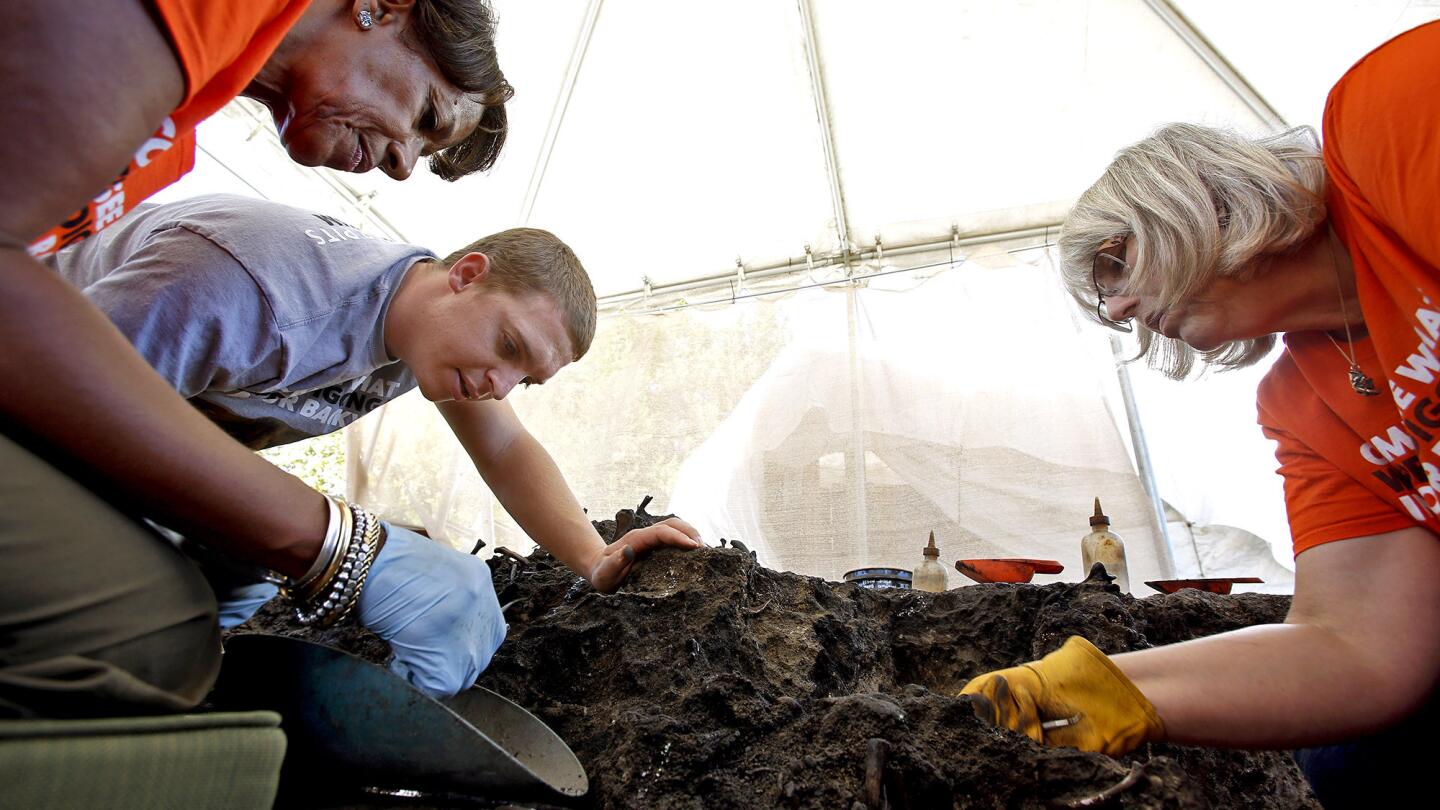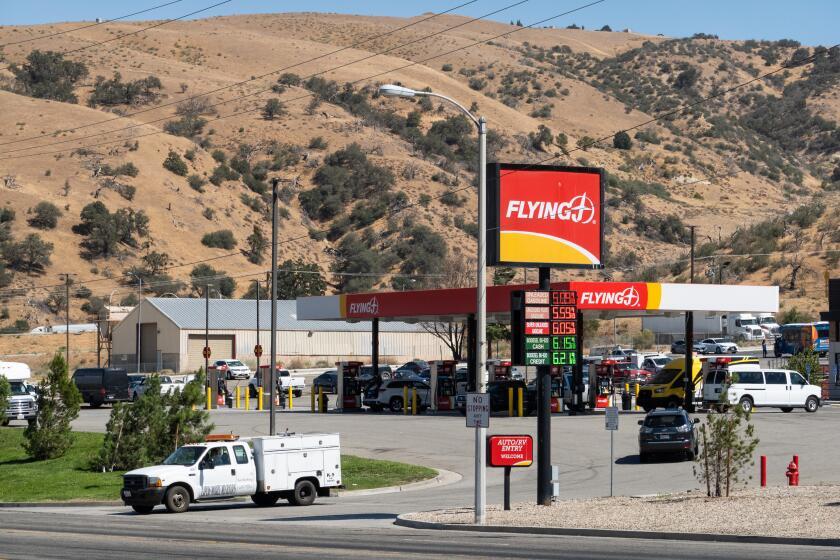Volunteers are an invaluable asset to the small staff operating out of the Page Museum, which houses and displays the La Brea Tar Pits’ treasures.
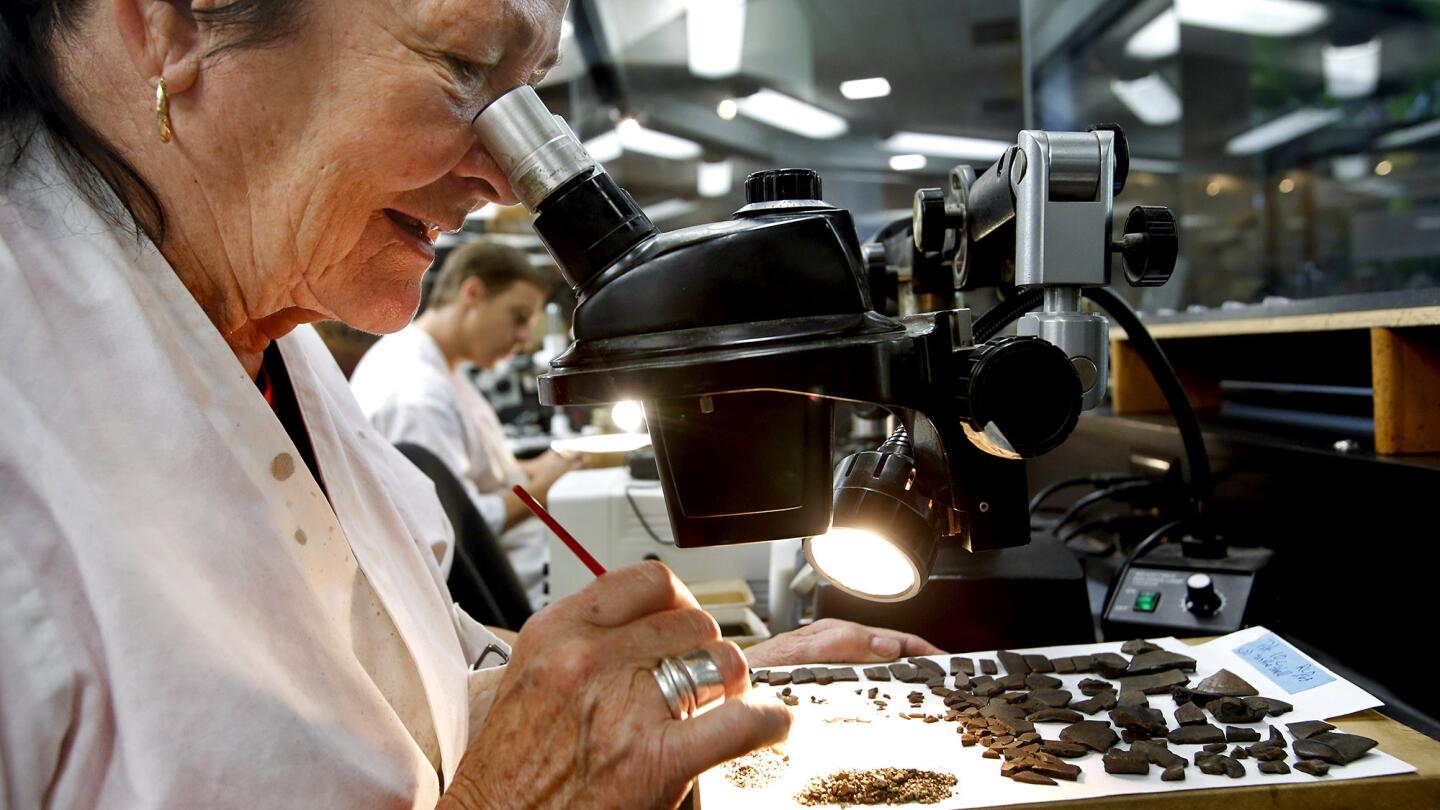
Volunteer Dixie Swift uses a microscope to isolate bone material, plant material, insects and shells from sediment, on the fossil of a western pond turtle. The turtle is believed to be between 10,000 to 40,000 years old. (Mel Melcon / Los Angeles Times)
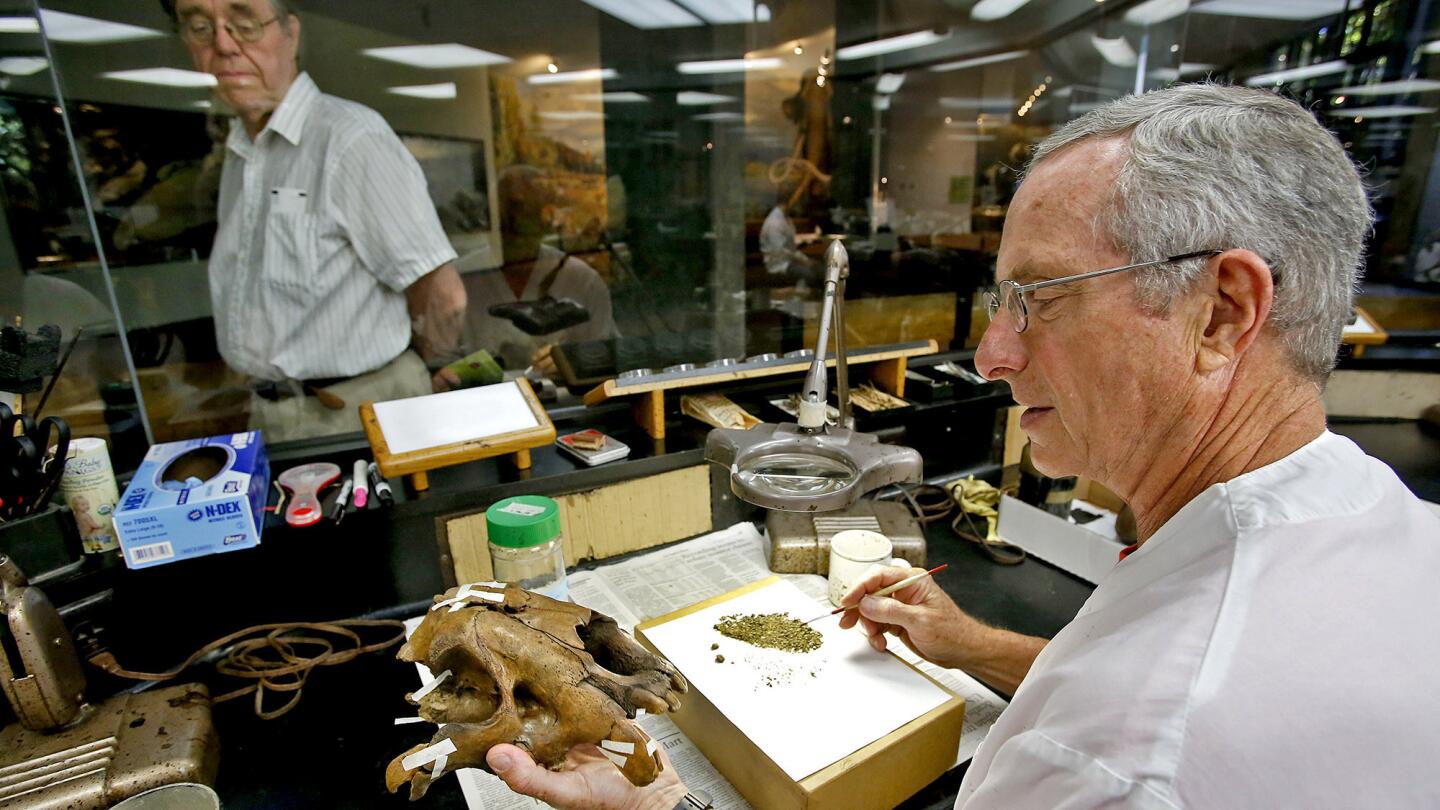
Volunteer Jack Schwellenbach holds the skull of “Cletus,” a saber-toothed cat, inside the fossil lab in the Page Museum. The skull is believed to be between 10,000 and 40,000 years old. (Mel Melcon / Los Angeles Times)
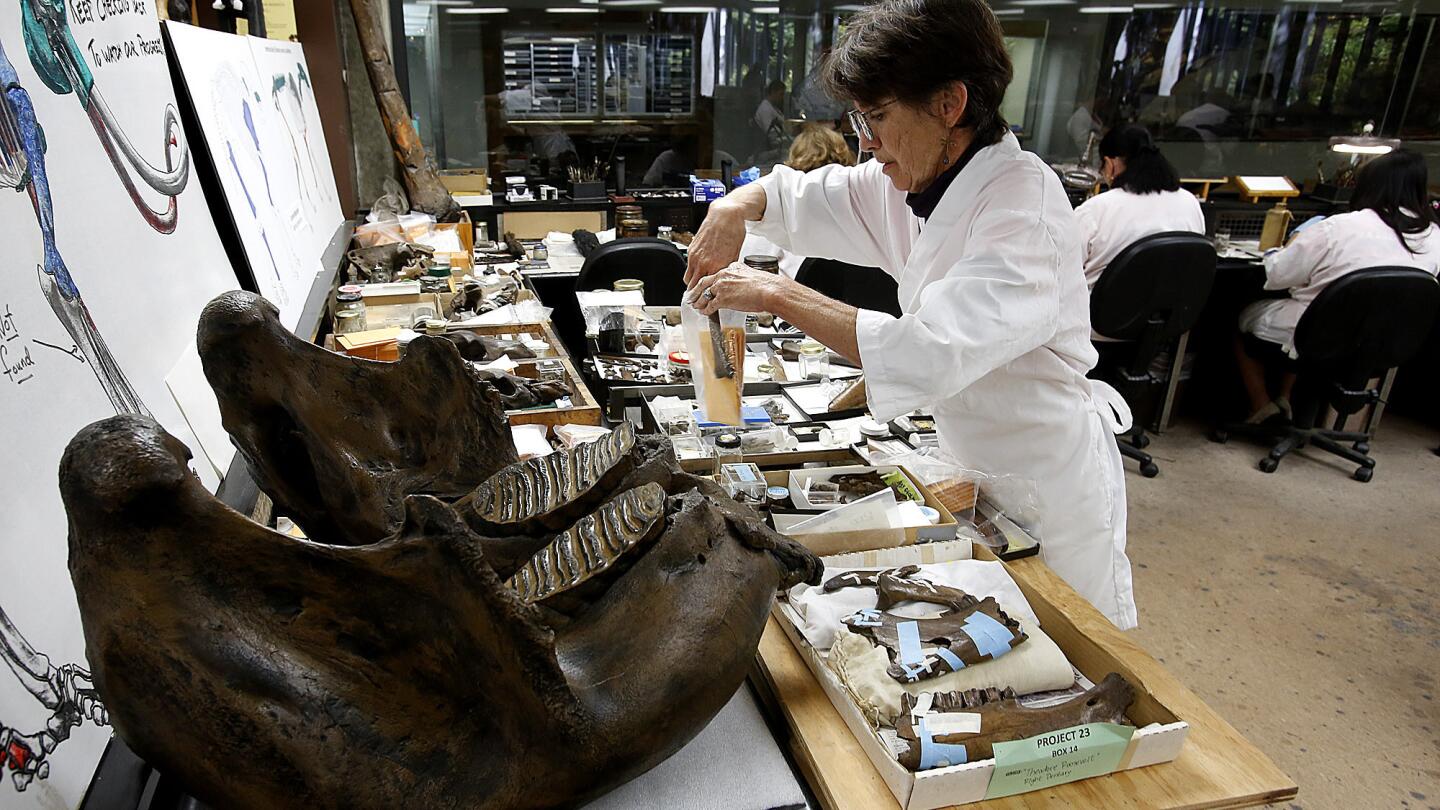
Volunteer coordinator Shelley Cox categorizes parts of an adult bison, dated to 42,000 years ago. In the foreground is a replica of the lower jaw of a full-grown Columbian mammoth. (Mel Melcon / Los Angeles Times)
Advertisement
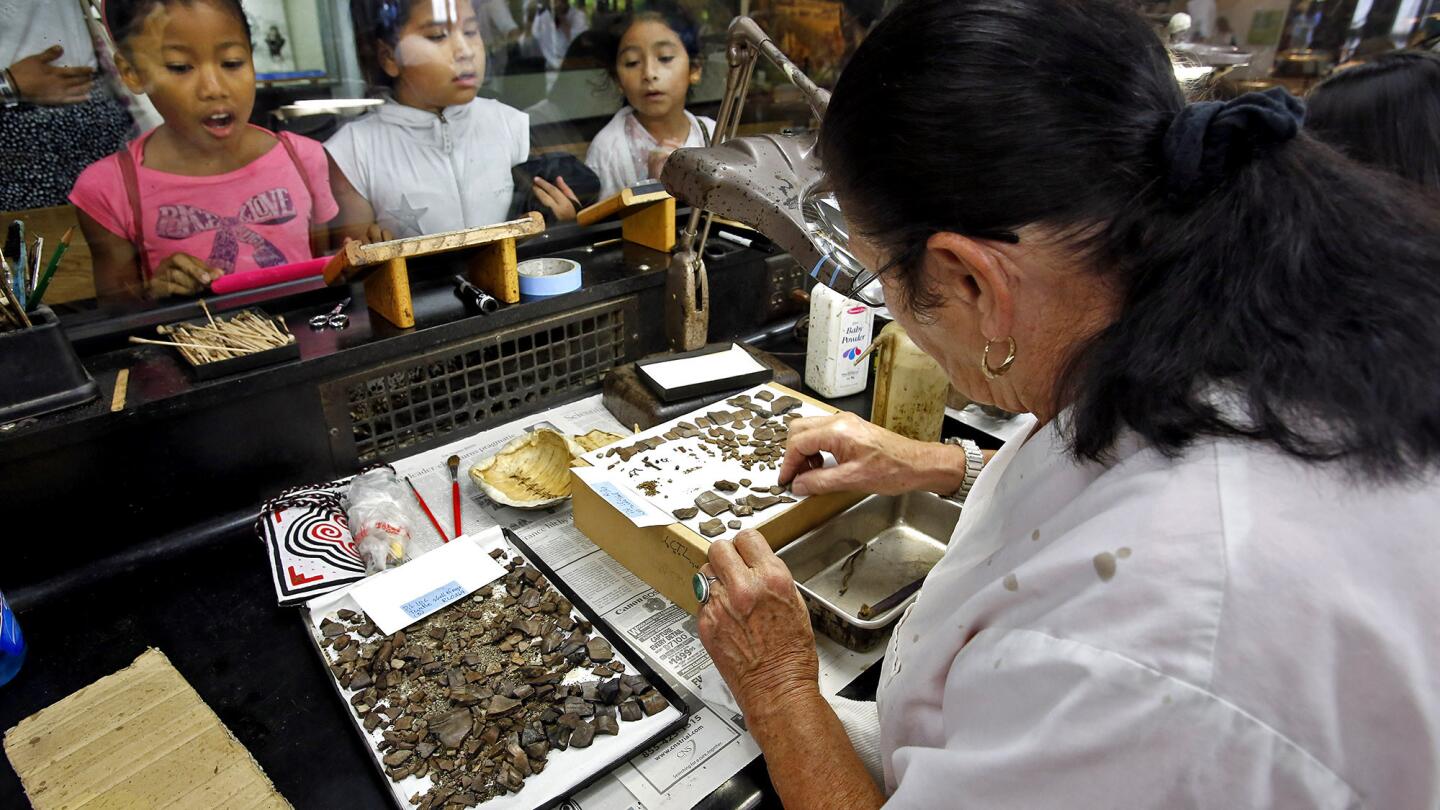
Volunteer Dixie Swift works in the fossil lab at the Page Museum.
(Mel Melcon / Los Angeles Times)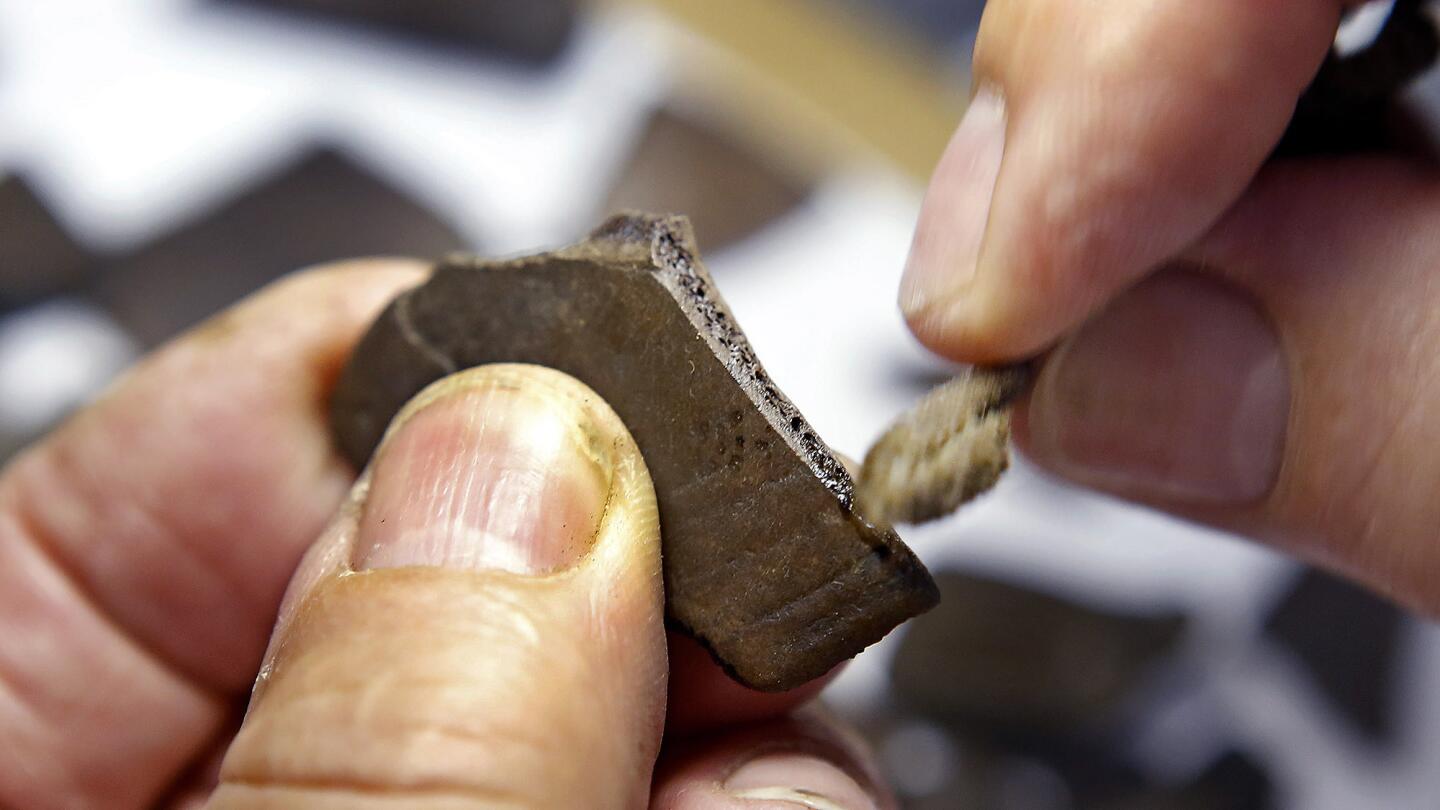
Volunteer Dixie Swift cleans a piece of shell from a western pond turtle. (Mel Melcon / Los Angeles Times)
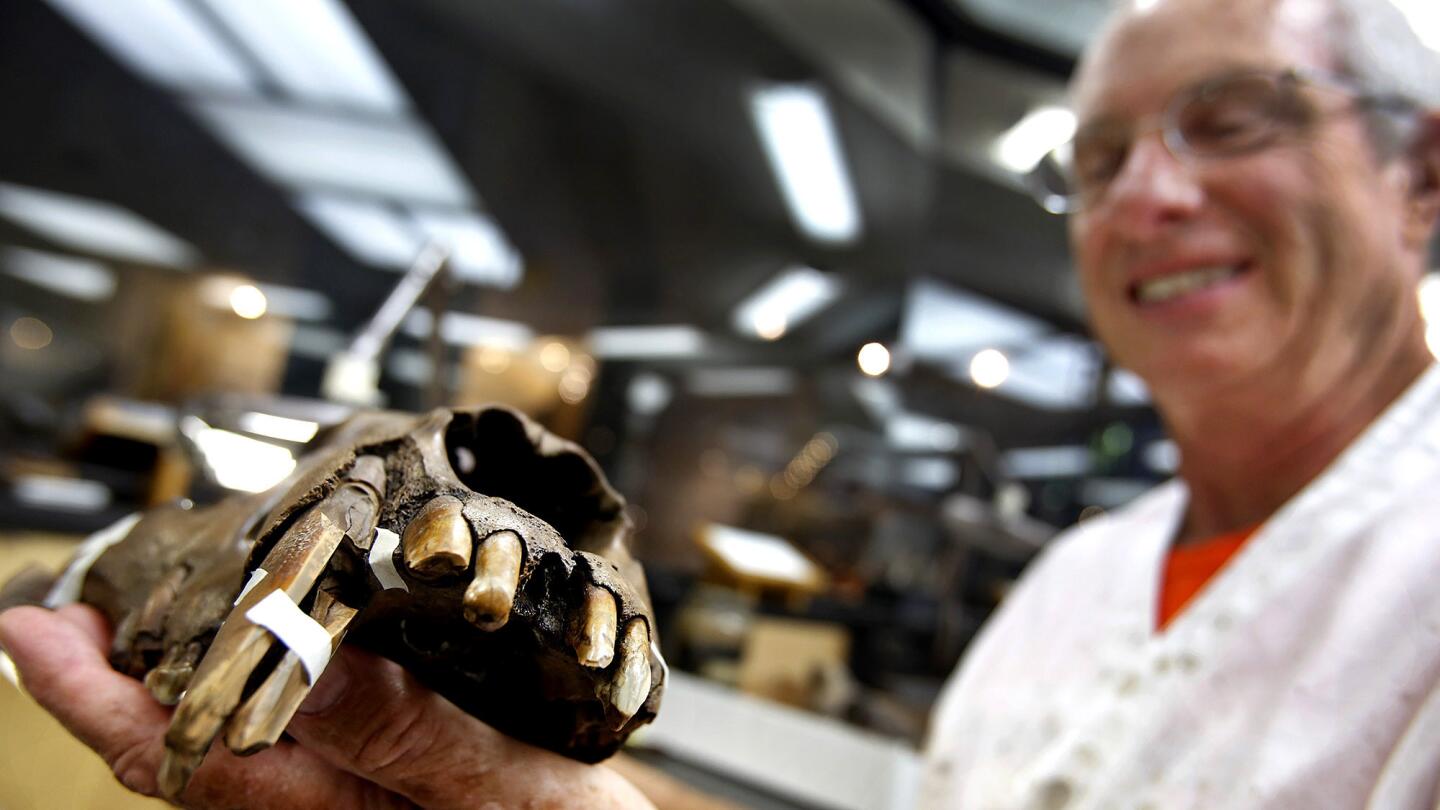
Volunteer Jack Schwellenbach displays the skull of “Cletus,” a saber-toothed cat nicknamed for a hillbilly character because of his snaggly teeth. (Mel Melcon / Los Angeles Times)
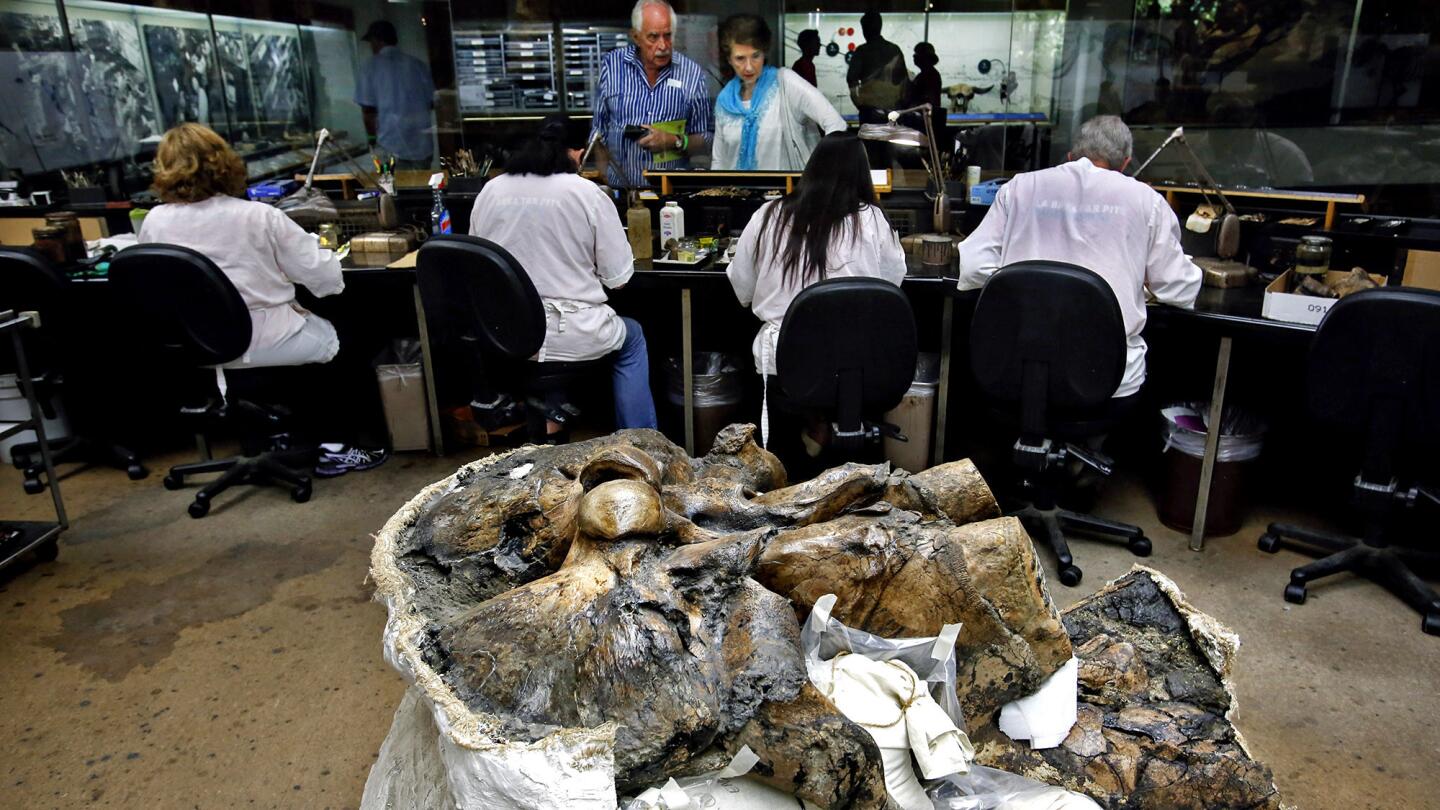
Volunteers work inside the fossil lab of the Page Museum at the La Brea Tar Pits. In the foreground is part of the skull of a full-grown Columbian mammoth.
(Mel Melcon / Los Angeles Times)